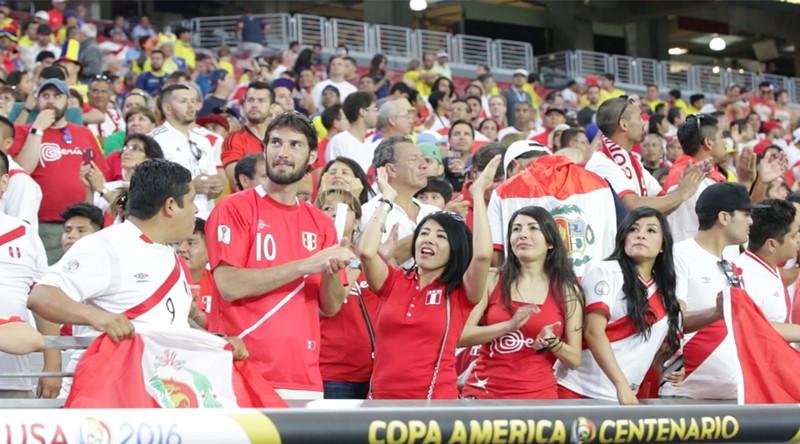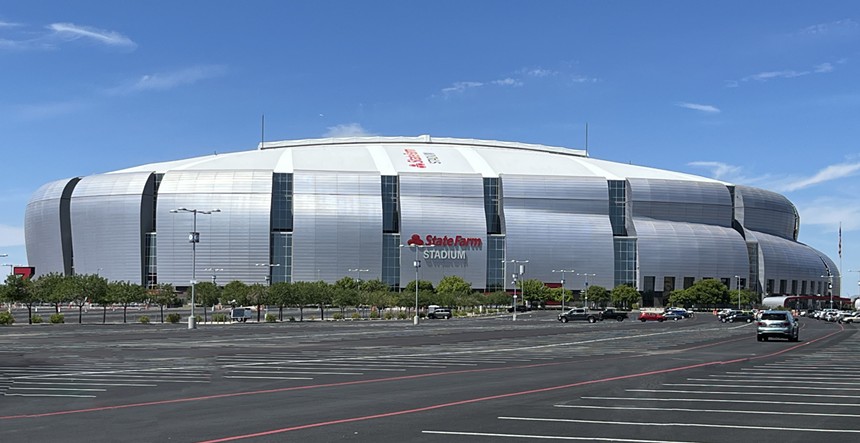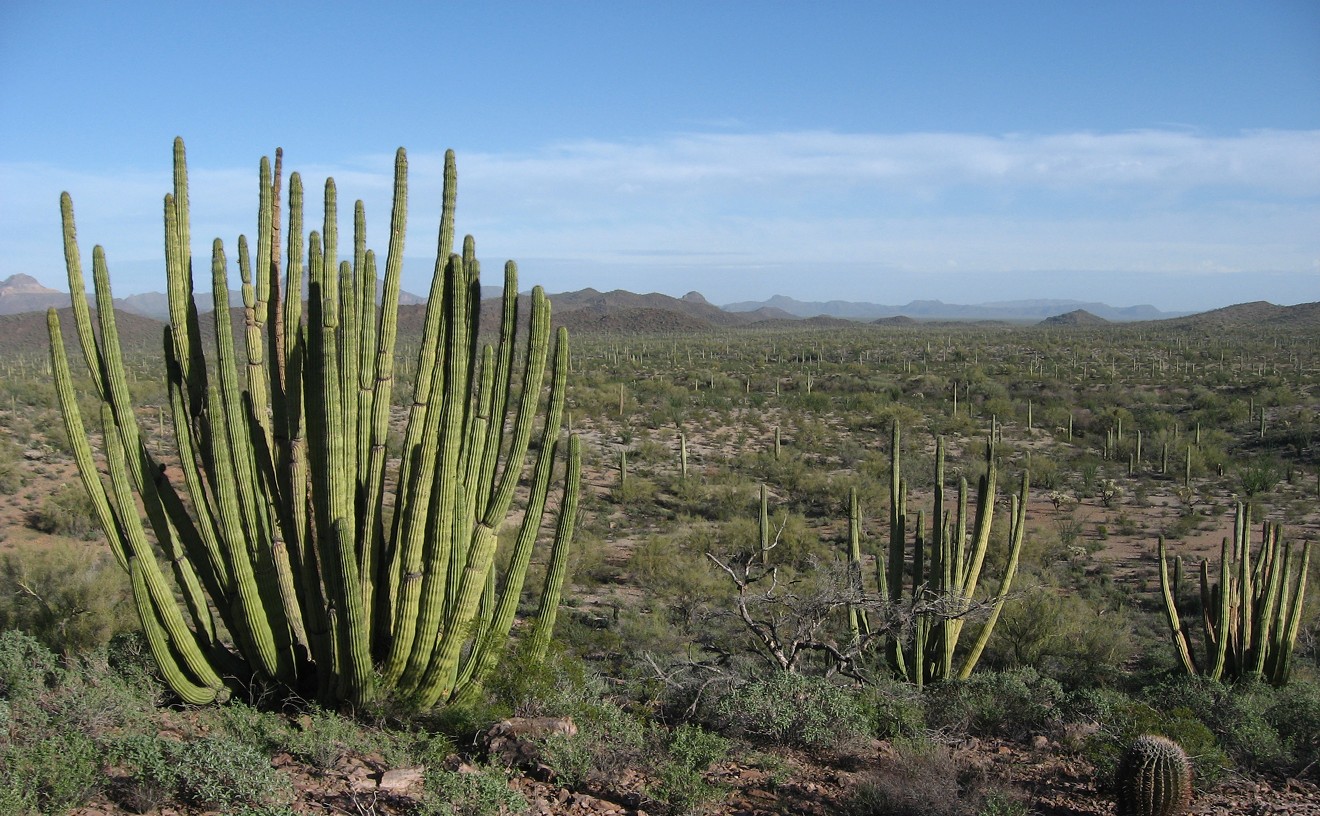The oldest international soccer tournament in the world has arrived in the Valley.
Since 1916, Copa América has long been one of the most coveted events to win for soccer’s elite. Every four years, 10 South American countries come together and compete in the major international tournament. This year marks only the second year that North American and Central American countries are allowed to compete in Copa América.
Lionel Messi and Argentina are the reigning champs, looking to win Copa for a record sixth time. Argentina and Uruguay sit at the top with 15 titles each, followed by Brazil with nine.
On Friday, State Farm Stadium in Glendale played host to the stars of international soccer in the first of three matches in the desert. The first two matches are out of groups B and D, and on Friday, Colombia beat Costa Rica 3-0.
“The players are very focused,” Colombia manager Néstor Lorenzo said, according to the Telegraph. “They are very humble. They know this is a game-by-game situation. ... They know what is the right direction and what to do, and the most important match is the next match.”
The second game in Glendale is out of group B, with Mexico taking on Ecuador on Sunday. After Mexico’s 1-0 loss to Venezuela, it sits in a tie for second with Ecuador. The El Tri faithful are expected to pack the stands, especially with their team on the brink of elimination.
Venezuela has already secured a spot in the knockouts, with two wins and six points. This sets up a winner-take-all showdown between Ecuador and Mexico.
“The situation is clear,” Mexican midfielder Luis Romo said postgame, according to the Los Angeles Times. “We need to win the next game. It’s a knockout match.”
Mexico knows it can’t settle for a draw despite being tied with Ecuador. If the game ends level after 90 minutes, Ecuador holds the tiebreaker, having scored more goals in the tournament thus far. Mexico will have to get the job done without captain and West Ham midfielder Edson Álvarez, who is out for the tournament after suffering a hamstring injury in a 1-0 opening match win over Jamaica.
Arguably the biggest of the three games will be held July 6 at 3 p.m. The quarterfinal matchup will see the winner of group D take on the runner-up in group C.
If everything goes as expected, Brazil could take on the United States. A lot has to happen, but when the schedule came out, the meeting was the most plausible scenario. Most expect the United States to fall to Uruguay and take second in group C. On the other side, most expect Brazil to top the group, entering the tournament as winners of five World Cups and nine Copa Américas.
But after Brazil’s opening game draw, and Colombia’s hot run of form, fans could see Colombia make its way back to Phoenix. And who knows, maybe the U.S. will take down Uruguay.
But we do know one thing: For the first time in the history of Arizona, two teams will play in the Copa América quarterfinal at State Farm Stadium, with a berth to the semis on the line.
Historically, this tournament is only for South American teams. The teams are split into two groups, with the top three sides from each group advancing to the knockout stages. Things look a little different this year, as six countries were added to the mix.
North and Central America are usually left out of high-profile international tournaments. Europe hosts the EUROS and South America hosts the Copa. For North and Central America, the Gold Cup is their major international tournament. Either Mexico or the United States is usually a shoo-in to win every year, with the exception of Canada in 2000.
Competing in a tournament of Copa América’s magnitude provides a chance for each country and player to join the ranks of legends like Messi, Pelé, Neymar, Ronaldo, Luis Suárez and countless others.
The United States, Mexico, Canada, Panama, Costa Rica and Jamaica turn the tournament into four groups of four. After each team plays each other in the group stage, the top two teams from each group advance to the knockouts.
Other than Mexico, which has previously received a special invitation twice to compete in the tournament, this tournament is only the second time these countries have participated. In 2016, the United States hosted the event. The U.S. reached the semifinal that year and fell to Argentina. In the final, Chile defeated Argentina at MetLife Stadium in penalties.
Now the tournament is back in the States, with 14 stadiums hosting games across group play and the knockout stage. Some notable venues outside State Farm Stadium include AT&T Stadium, Mercedes-Benz Stadium, MetLife Stadium and SoFi Stadium.
State Farm Stadium is no stranger to hosting big events and the world’s biggest stars, having hosted Super Bowls, Final Fours and concerts as the home of the Arizona Cardinals. Now for the second time, soccer stars will take center stage.
Over the next two weeks, soccer has never been bigger in the Valley. And considering there will be no World Cup games in Phoenix in 2026, this is the last time in the foreseeable future to witness these countries and stars in a tournament of this magnitude.
For more stories from Cronkite News, visit cronkitenews.azpbs.org.
[
{
"name": "Air - MediumRectangle - Inline Content - Mobile Display Size",
"component": "18478561",
"insertPoint": "2",
"requiredCountToDisplay": "2",
"watchElement": ".fdn-content-body",
"astAdList": [
{
"adType": "rectangle",
"displayTargets": "mobile"
}
]
},{
"name": "Editor Picks",
"component": "16759093",
"insertPoint": "4",
"requiredCountToDisplay": "1",
"watchElement": ".fdn-content-body",
"astAdList": [
{
"adType": "rectangle",
"displayTargets": "desktop|tablet"
},{
"adType": "rectangle",
"displayTargets": "desktop|tablet|mobile"
}
]
},{
"name": "Inline Links",
"component": "17980324",
"insertPoint": "8th",
"startingPoint": 8,
"requiredCountToDisplay": "7",
"maxInsertions": 25
},{
"name": "Air - MediumRectangle - Combo - Inline Content",
"component": "16759092",
"insertPoint": "8th",
"startingPoint": 8,
"requiredCountToDisplay": "7",
"maxInsertions": 25,
"watchElement": ".fdn-content-body",
"astAdList": [
{
"adType": "rectangle",
"displayTargets": "desktop|tablet"
},{
"adType": "rectangle",
"displayTargets": "desktop|tablet|mobile"
}
]
},{
"name": "Inline Links",
"component": "17980324",
"insertPoint": "8th",
"startingPoint": 12,
"requiredCountToDisplay": "11",
"maxInsertions": 24
},{
"name": "Air - Leaderboard Tower - Combo - Inline Content",
"component": "16759094",
"insertPoint": "8th",
"startingPoint": 12,
"requiredCountToDisplay": "11",
"maxInsertions": 24,
"watchElement": ".fdn-content-body",
"astAdList": [
{
"adType": "leaderboardInlineContent",
"displayTargets": "desktop|tablet"
},{
"adType": "tower",
"displayTargets": "mobile"
}
]
}
]












